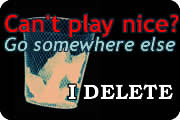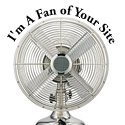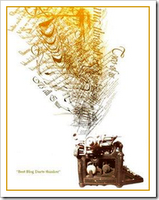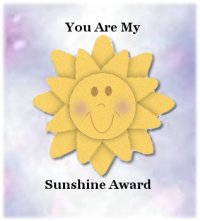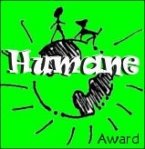Pharmaceuticals Found in Drinking Water, Affecting Wildlife and Maybe Humans
A vast array of pharmaceuticals — including antibiotics, anti-convulsants, mood stabilizers and sex hormones — have been found in the drinking water supplies of at least 41 million Americans, an Associated Press investigation shows.
To be sure, the concentrations of these pharmaceuticals are tiny, measured in quantities of parts per billion or trillion, far below the levels of a medical dose. Also, utilities insist their water is safe.
But the presence of so many prescription drugs — and over-the-counter medicines like acetaminophen and ibuprofen — in so much of our drinking water is heightening worries among scientists of long-term consequences to human health.
In the course of a five-month inquiry, the AP discovered that drugs have been detected in the drinking water supplies of 24 major metropolitan areas — from Southern California to Northern New Jersey, from Detroit to Louisville, Ky.
Water providers rarely disclose results of pharmaceutical screenings, unless pressed, the AP found. For example, the head of a group representing major California suppliers said the public "doesn't know how to interpret the information" and might be unduly alarmed.
How do the drugs get into the water?
People take pills. Their bodies absorb some of the medication, but the rest of it passes through and is flushed down the toilet. The wastewater is treated before it is discharged into reservoirs, rivers or lakes. Then, some of the water is cleansed again at drinking water treatment plants and piped to consumers. But most treatments do not remove all drug residue.
And while researchers do not yet understand the exact risks from decades of persistent exposure to random combinations of low levels of pharmaceuticals, recent studies — which have gone virtually unnoticed by the general public — have found alarming effects on human cells and wildlife.
"We recognize it is a growing concern and we're taking it very seriously," said Benjamin H. Grumbles, assistant administrator for water at the U.S. Environmental Protection Agency.
Members of the AP National Investigative Team reviewed hundreds of scientific reports, analyzed federal drinking water databases, visited environmental study sites and treatment plants and interviewed more than 230 officials, academics and scientists. They also surveyed the nation's 50 largest cities and a dozen other major water providers, as well as smaller community water providers in all 50 states.
Here are some of the key test results obtained by the AP:
—Officials in Philadelphia said testing there discovered 56 pharmaceuticals or byproducts in treated drinking water, including medicines for pain, infection, high cholesterol, asthma, epilepsy, mental illness and heart problems. Sixty-three pharmaceuticals or byproducts were found in the city's watersheds.
—Anti-epileptic and anti-anxiety medications were detected in a portion of the treated drinking water for 18.5 million people in Southern California.
—Researchers at the U.S. Geological Survey analyzed a Passaic Valley Water Commission drinking water treatment plant, which serves 850,000 people in Northern New Jersey, and found a metabolized angina medicine and the mood-stabilizing carbamazepine in drinking water.
—A sex hormone was detected in San Francisco's drinking water.
—The drinking water for Washington, D.C., and surrounding areas tested positive for six pharmaceuticals.
—Three medications, including an antibiotic, were found in drinking water supplied to Tucson, Ariz.
The situation is undoubtedly worse than suggested by the positive test results in the major population centers documented by the AP.
The federal government doesn't require any testing and hasn't set safety limits for drugs in water. Of the 62 major water providers contacted, the drinking water for only 28 was tested. Among the 34 that haven't: Houston, Chicago, Miami, Baltimore, Phoenix, Boston and New York City's Department of Environmental Protection, which delivers water to 9 million people.
Some providers screen only for one or two pharmaceuticals, leaving open the possibility that others are present.
The AP's investigation also indicates that watersheds, the natural sources of most of the nation's water supply, also are contaminated. Tests were conducted in the watersheds of 35 of the 62 major providers surveyed by the AP, and pharmaceuticals were detected in 28.
Yet officials in six of those 28 metropolitan areas said they did not go on to test their drinking water — Fairfax, Va.; Montgomery County in Maryland; Omaha, Neb.; Oklahoma City; Santa Clara, Calif., and New York City.
The New York state health department and the USGS tested the source of the city's water, upstate. They found trace concentrations of heart medicine, infection fighters, estrogen, anti-convulsants, a mood stabilizer and a tranquilizer.
City water officials declined repeated requests for an interview. In a statement, they insisted that "New York City's drinking water continues to meet all federal and state regulations regarding drinking water quality in the watershed and the distribution system" — regulations that do not address trace pharmaceuticals.
In several cases, officials at municipal or regional water providers told the AP that pharmaceuticals had not been detected, but the AP obtained the results of tests conducted by independent researchers that showed otherwise. For example, water department officials in New Orleans said their water had not been tested for pharmaceuticals, but a Tulane University researcher and his students have published a study that found the pain reliever naproxen, the sex hormone estrone and the anti-cholesterol drug byproduct clofibric acid in treated drinking water.
Of the 28 major metropolitan areas where tests were performed on drinking water supplies, only Albuquerque; Austin, Texas; and Virginia Beach, Va.; said tests were negative. The drinking water in Dallas has been tested, but officials are awaiting results. Arlington, Texas, acknowledged that traces of a pharmaceutical were detected in its drinking water but cited post-9/11 security concerns in refusing to identify the drug.
The AP also contacted 52 small water providers — one in each state, and two each in Missouri and Texas — that serve communities with populations around 25,000. All but one said their drinking water had not been screened for pharmaceuticals; officials in Emporia, Kan., refused to answer AP's questions, also citing post-9/11 issues.
Rural consumers who draw water from their own wells aren't in the clear either, experts say.
The Stroud Water Research Center, in Avondale, Pa., has measured water samples from New York City's upstate watershed for caffeine, a common contaminant that scientists often look for as a possible signal for the presence of other pharmaceuticals. Though more caffeine was detected at suburban sites, researcher Anthony Aufdenkampe was struck by the relatively high levels even in less populated areas.
He suspects it escapes from failed septic tanks, maybe with other drugs. "Septic systems are essentially small treatment plants that are essentially unmanaged and therefore tend to fail," Aufdenkampe said.
Even users of bottled water and home filtration systems don't necessarily avoid exposure. Bottlers, some of which simply repackage tap water, do not typically treat or test for pharmaceuticals, according to the industry's main trade group. The same goes for the makers of home filtration systems.
Contamination is not confined to the United States. More than 100 different pharmaceuticals have been detected in lakes, rivers, reservoirs and streams throughout the world. Studies have detected pharmaceuticals in waters throughout Asia, Australia, Canada and Europe — even in Swiss lakes and the North Sea.
For example, in Canada, a study of 20 Ontario drinking water treatment plants by a national research institute found nine different drugs in water samples. Japanese health officials in December called for human health impact studies after detecting prescription drugs in drinking water at seven different sites.
In the United States, the problem isn't confined to surface waters. Pharmaceuticals also permeate aquifers deep underground, source of 40 percent of the nation's water supply. Federal scientists who drew water in 24 states from aquifers near contaminant sources such as landfills and animal feed lots found minuscule levels of hormones, antibiotics and other drugs.
Perhaps it's because Americans have been taking drugs — and flushing them unmetabolized or unused — in growing amounts. Over the past five years, the number of U.S. prescriptions rose 12 percent to a record 3.7 billion, while nonprescription drug purchases held steady around 3.3 billion, according to IMS Health and The Nielsen Co.
"People think that if they take a medication, their body absorbs it and it disappears, but of course that's not the case," said EPA scientist Christian Daughton, one of the first to draw attention to the issue of pharmaceuticals in water in the United States.
Some drugs, including widely used cholesterol fighters, tranquilizers and anti-epileptic medications, resist modern drinking water and wastewater treatment processes. Plus, the EPA says there are no sewage treatment systems specifically engineered to remove pharmaceuticals.
One technology, reverse osmosis, removes virtually all pharmaceutical contaminants but is very expensive for large-scale use and leaves several gallons of polluted water for every one that is made drinkable.
Another issue: There's evidence that adding chlorine, a common process in conventional drinking water treatment plants, makes some pharmaceuticals more toxic.
Human waste isn't the only source of contamination. Cattle, for example, are given ear implants that provide a slow release of trenbolone, an anabolic steroid used by some bodybuilders, which causes cattle to bulk up. But not all the trenbolone circulating in a steer is metabolized. A German study showed 10 percent of the steroid passed right through the animals.
Water sampled downstream of a Nebraska feedlot had steroid levels four times as high as the water taken upstream. Male fathead minnows living in that downstream area had low testosterone levels and small heads.
Other veterinary drugs also play a role. Pets are now treated for arthritis, cancer, heart disease, diabetes, allergies, dementia, and even obesity — sometimes with the same drugs as humans. The inflation-adjusted value of veterinary drugs rose by 8 percent, to $5.2 billion, over the past five years, according to an analysis of data from the Animal Health Institute.
Ask the pharmaceutical industry whether the contamination of water supplies is a problem, and officials will tell you no. "Based on what we now know, I would say we find there's little or no risk from pharmaceuticals in the environment to human health," said microbiologist Thomas White, a consultant for the Pharmaceutical Research and Manufacturers of America.
But at a conference last summer, Mary Buzby — director of environmental technology for drug maker Merck & Co. Inc. — said: "There's no doubt about it, pharmaceuticals are being detected in the environment and there is genuine concern that these compounds, in the small concentrations that they're at, could be causing impacts to human health or to aquatic organisms."
Recent laboratory research has found that small amounts of medication have affected human embryonic kidney cells, human blood cells and human breast cancer cells. The cancer cells proliferated too quickly; the kidney cells grew too slowly; and the blood cells showed biological activity associated with inflammation.
Also, pharmaceuticals in waterways are damaging wildlife across the nation and around the globe, research shows. Notably, male fish are being feminized, creating egg yolk proteins, a process usually restricted to females. Pharmaceuticals also are affecting sentinel species at the foundation of the pyramid of life — such as earth worms in the wild and zooplankton in the laboratory, studies show.
Some scientists stress that the research is extremely limited, and there are too many unknowns. They say, though, that the documented health problems in wildlife are disconcerting.
"It brings a question to people's minds that if the fish were affected ... might there be a potential problem for humans?" EPA research biologist Vickie Wilson told the AP. "It could be that the fish are just exquisitely sensitive because of their physiology or something. We haven't gotten far enough along."
With limited research funds, said Shane Snyder, research and development project manager at the Southern Nevada Water Authority, a greater emphasis should be put on studying the effects of drugs in water.
"I think it's a shame that so much money is going into monitoring to figure out if these things are out there, and so little is being spent on human health," said Snyder. "They need to just accept that these things are everywhere — every chemical and pharmaceutical could be there. It's time for the EPA to step up to the plate and make a statement about the need to study effects, both human and environmental."
To the degree that the EPA is focused on the issue, it appears to be looking at detection. Grumbles acknowledged that just late last year the agency developed three new methods to "detect and quantify pharmaceuticals" in wastewater. "We realize that we have a limited amount of data on the concentrations," he said. "We're going to be able to learn a lot more."
While Grumbles said the EPA had analyzed 287 pharmaceuticals for possible inclusion on a draft list of candidates for regulation under the Safe Drinking Water Act, he said only one, nitroglycerin, was on the list. Nitroglycerin can be used as a drug for heart problems, but the key reason it's being considered is its widespread use in making explosives.
So much is unknown. Many independent scientists are skeptical that trace concentrations will ultimately prove to be harmful to humans. Confidence about human safety is based largely on studies that poison lab animals with much higher amounts.
There's growing concern in the scientific community, meanwhile, that certain drugs — or combinations of drugs — may harm humans over decades because water, unlike most specific foods, is consumed in sizable amounts every day.
Our bodies may shrug off a relatively big one-time dose, yet suffer from a smaller amount delivered continuously over a half century, perhaps subtly stirring allergies or nerve damage. Pregnant women, the elderly and the very ill might be more sensitive.
Many concerns about chronic low-level exposure focus on certain drug classes: chemotherapy that can act as a powerful poison; hormones that can hamper reproduction or development; medicines for depression and epilepsy that can damage the brain or change behavior; antibiotics that can allow human germs to mutate into more dangerous forms; pain relievers and blood-pressure diuretics.
For several decades, federal environmental officials and nonprofit watchdog environmental groups have focused on regulated contaminants — pesticides, lead, PCBs — which are present in higher concentrations and clearly pose a health risk.
However, some experts say medications may pose a unique danger because, unlike most pollutants, they were crafted to act on the human body.
"These are chemicals that are designed to have very specific effects at very low concentrations. That's what pharmaceuticals do. So when they get out to the environment, it should not be a shock to people that they have effects," says zoologist John Sumpter at Brunel University in London, who has studied trace hormones, heart medicine and other drugs.
And while drugs are tested to be safe for humans, the timeframe is usually over a matter of months, not a lifetime. Pharmaceuticals also can produce side effects and interact with other drugs at normal medical doses. That's why — aside from therapeutic doses of fluoride injected into potable water supplies — pharmaceuticals are prescribed to people who need them, not delivered to everyone in their drinking water.
"We know we are being exposed to other people's drugs through our drinking water, and that can't be good," says Dr. David Carpenter, who directs the Institute for Health and the Environment of the State University of New York at Albany.
By JEFF DONN, MARTHA MENDOZA and JUSTIN PRITCHARD
The Associated Press











